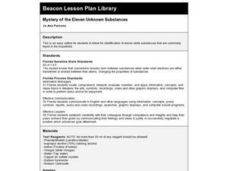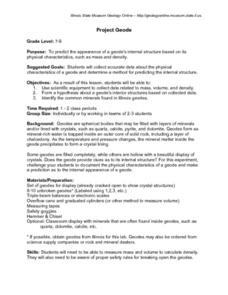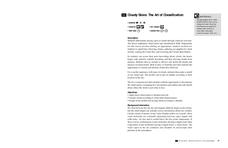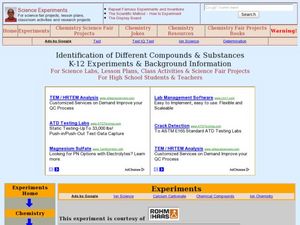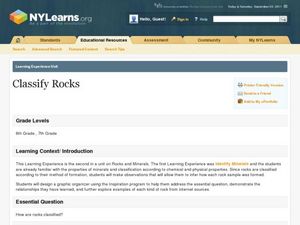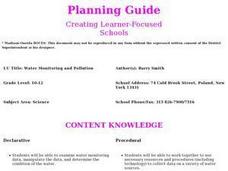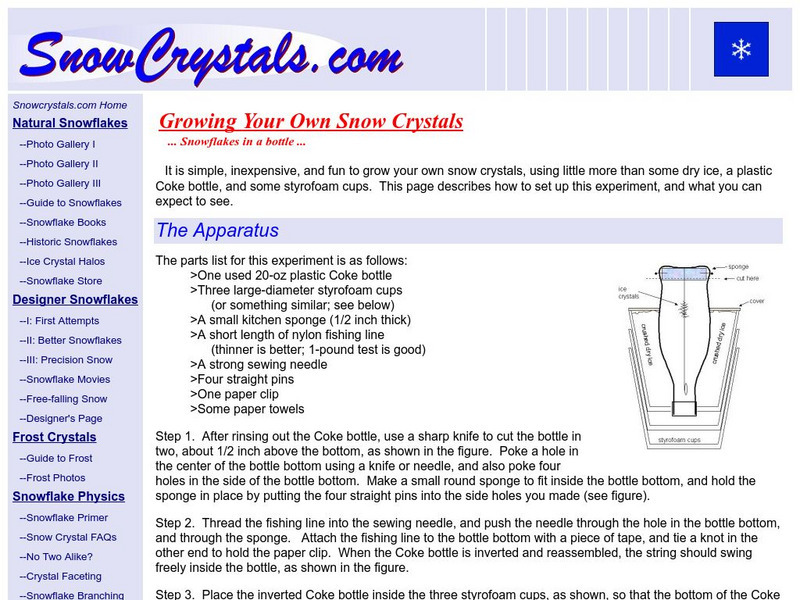Curated OER
Electric Circuits
Students explore energy by completing an electricity worksheet. In this conductors lesson, students define the energy related vocabulary terms circuit, electronics, conductor and semi-conductor before examining computer chips in class....
Curated OER
A Creative Classroom Model For a Sixth Grade Science Class
Sixth graders observe with a microscope such simple crystals as salt, sugar, cream of tartar, and other chemicals which are listed in detail. They observe the crystalline structure and make comparisons, culminating in the creation of...
Curated OER
Are You Being Poisoned by Your Dishes?
Learners explore lead poisoning and how it relates to ceramic dishes. They perform an experiment to discover if any of your ceramic ware is leaching lead which might cause lead poisoning.
Curated OER
Mystery of the Eleven Unknown Substances
Fourth graders identify eleven white substances that are commonly found in the household. They, in pairs, perform experiments on a variety of substances, and must identify them based on the reactions they observe.
Curated OER
Observing and Classifying Rocks
Fourth graders examine various types of rocks and record their properties. They collect rocks at home and bring them to school where they are mixed and distributed to groups of students. After writing their observations on...
Curated OER
Project Geode
Young geologists attempt to predict the appearnace of a geode's internal structure based on how it looks from the outside, its mass, and its physical characteristics. In this geologly lesson, learners use scientific equipment to collect...
Bekshire Museum
Cloudy Skies: The Art of Classification
Such a great resource and perfect for learners in Kindergarten through third grade. The class will discuss cloud types and formation, and then they'll get outside and draw as they observe the clouds they see. They'll need to take note of...
Polar Trec
Ice Cores: Modeling Ice Sheets
Ice cores provide scientists with knowledge of historic melt layers, air temperatures, greenhouse gases, and climate stability. Scholars work in groups to build layers representing snow and ice over thousands of years. Then, groups...
Curated OER
Gelatin Volcanoes
Students investigate magma flow using gelatin volcano models. In this earth science lesson, students sketch the magma bodies as observed from the top of their model. They explain why magma moves that way.
Curated OER
Ziplock Chemistry
Students investigate various chemical reactions when creating mixtures in ziplock baggies. In this chemistry lesson, students will recognize various chemical reactions and cite evidence. Safety and assessment strategies are included in...
Curated OER
Baseball Memories
Students act as historians by, first, reading and analyzing oral histories of professional baseball players to become familiar with baseball figures. Then, they proceed to interview family members, relatives, or neighbors who have...
Curated OER
Weather Lessons: Explore the Possibilities
Looking to the sky isn't just for day dreamers.The weather is a fascinating way to explore science and history.
Curated OER
Identification of Different Compounds and Substances
Students conduct a series of tests to identify unknown compounds. In this chemistry lesson, students compare the physical and chemical properties of substances. They collect data and formulate a conclusion.
Curated OER
Project Geode
Students predict the appearance of a geode's internal structure based on its mass and density. They form a hypothesis based on the data they collect. They also identify common minerals found in Illinois.
Curated OER
Classify Rocks
Students classify different types of rocks. In this earth science lesson plan, students test different rock samples and construct a chart to record observations. They create a concept map that answers essential questions.
Curated OER
Water Monitoring and Pollution
Learners explore the effects of pollution on water supply and how to identify safe drinking water. They test different samples of water over regular intervals and analyze the results to see if they are cyclical or represent a growing...
Curated OER
English Exercises: Cloze Exercise
In this online interactive English worksheet, students respond to 29 fill in the blank questions where they complete a cloze activity. Students may submit their answers to be scored.
Curated OER
Polarization
Eighth graders study the basic facts of polarization. In this light waves lesson students demonstrate some activities illustrating interference patterns.
Curated OER
Heating
Students develop the idea that heat is a form of energy which moves from hot objects to cold ones.
Science Buddies
Science Buddies: When Science Is Sweet: Growing Rock Candy Crystals
Though rock candy seems to be a simple enough treat, it is also pretty interesting to make. Crystallized sugar that can be grown from a sugar-water solution is just how rock candy is made. In this experiment, you will learn to make your...
PBS
Pbs Kids: Dragonfly Tv Do It: Grow a Crystal
This PBS Kids site teaches students about crystals and includes an activity that shows how to make sparkling gems at home.
Science Fun for Everyone
Science Fun: Cool Crystals
Make your own crystals with this fun experiment. Different crystals have different shapes. What shape did your crystals form? Video tutorial included.
Science Bob Pflugfelder
Science bob.com: Make Your Own Rock Candy!
This concise site provides directions for creating rock candy using a super-saturated sugar water solution. Describes super-saturation following the procedure.
California Institute of Technology
Growing Your Own Snow Crystals
No two snowflakes are the same! Find out if that statement is true by "growing" your own snow flakes and comparing them. You need a coke bottle, dry ice and a Styrofoam cup.



